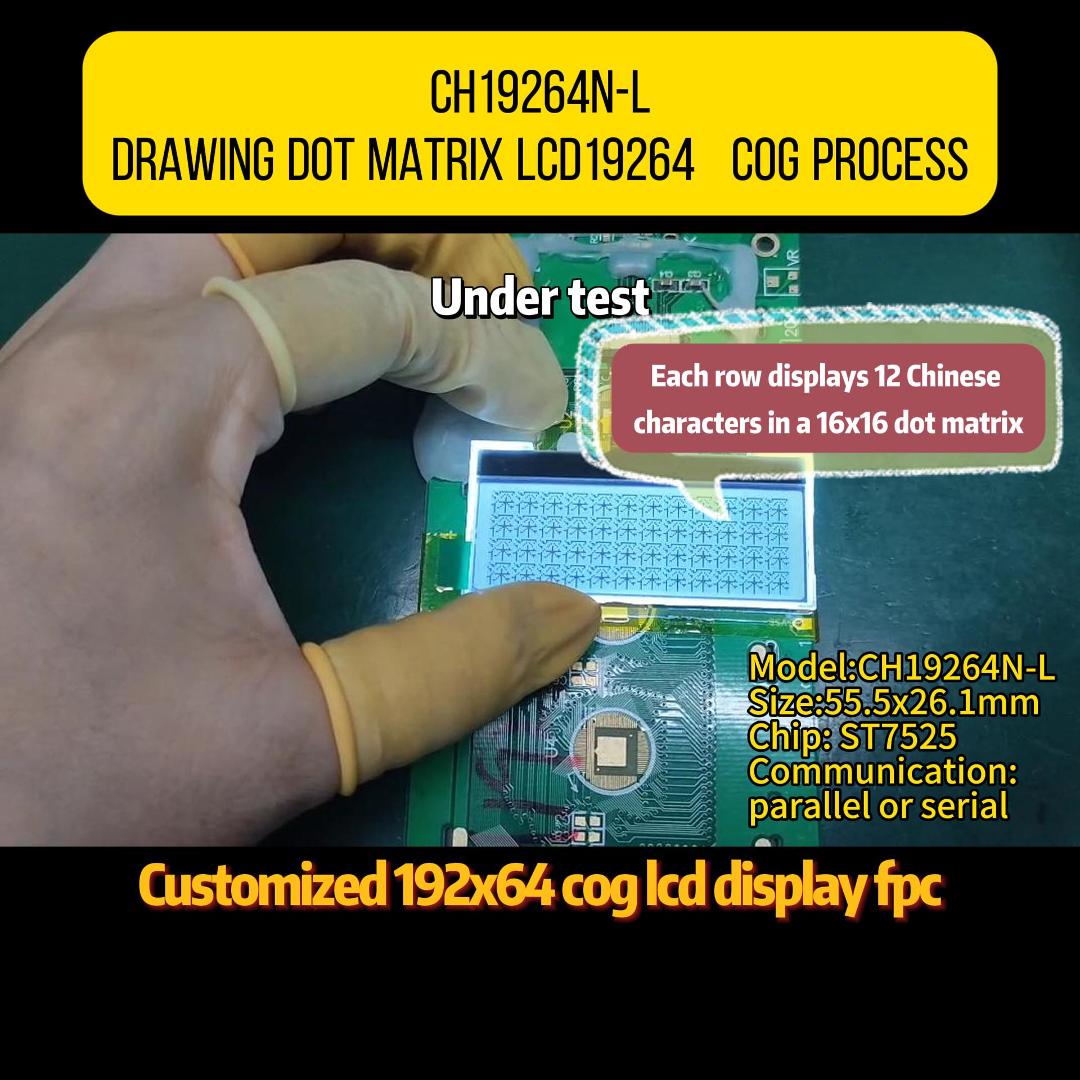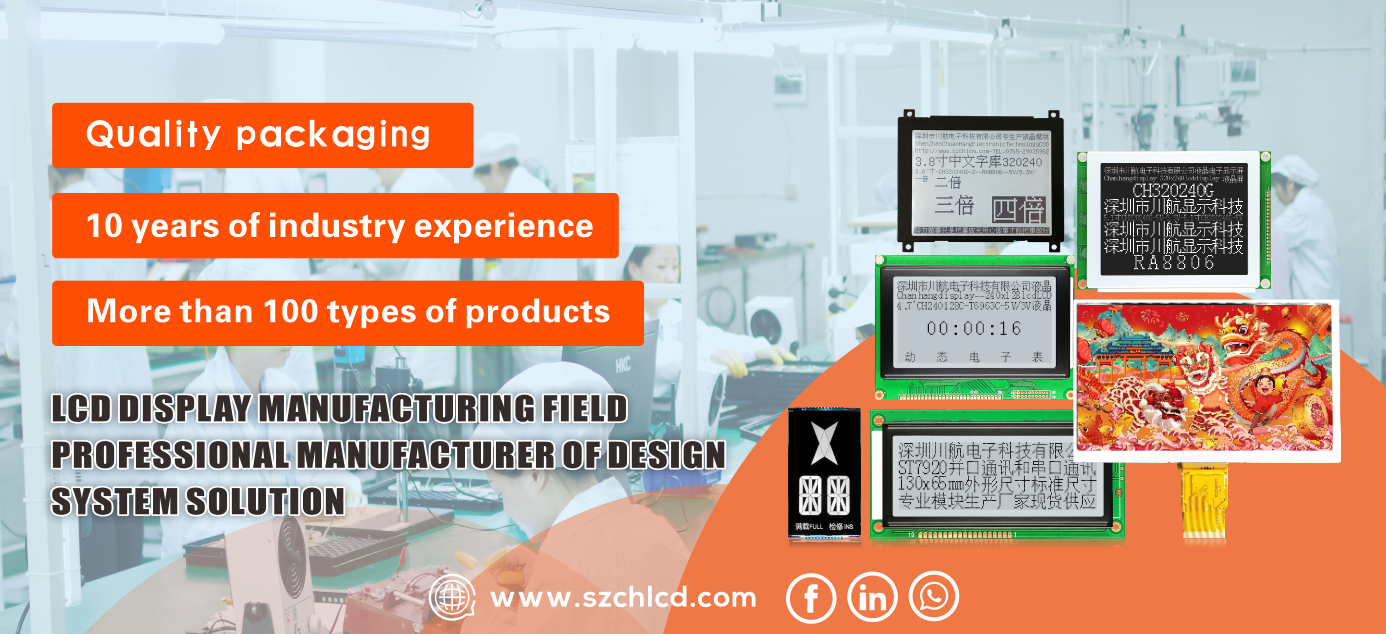When you interact with an electronic device—whether it’s a medical instrument, industrial controller, or a point-of-sale system—chances are you’re looking at a dot matrix LCD display module. These versatile components are fundamental in presenting data clearly and efficiently across countless industries. But what exactly are they, how do they function, and what should you consider when integrating one into your product? In this article, we’ll explore the technology behind these displays, their diverse applications, and address common questions users encounter.

A dot matrix LCD display module is a type of liquid crystal display that forms characters, numbers, or graphics using a grid of tiny pixels (dots). Unlike segmented LCDs (which show only fixed shapes like numbers on a calculator), a dot matrix offers flexibility. Each dot can be individually controlled, allowing for the creation of custom fonts, complex symbols, and even basic animations.
These modules consist of several key layers: a backlight (often LED-based), polarizers, liquid crystal material sandwiched between glass substrates, and a driver IC that controls the individual pixels. The most common types are Character LCDs (which display predefined alphanumeric characters) and Graphic LCDs (which offer full control over every pixel for custom images).
Their ability to show variable information clearly under various lighting conditions makes them a preferred choice in many professional and consumer applications.
The operation of a dot matrix LCD display module hinges on the manipulation of light by liquid crystals. Here’s a simplified breakdown:
The Grid Structure: The display is composed of a matrix of rows and columns. The intersection of each row and column forms a pixel that can be turned on or off.
Addressing Pixels: The driver integrated circuit (IC) sends electrical signals to specific rows and columns. When a voltage is applied to a particular intersection, the liquid crystals at that point align to allow light to pass through (or block it, depending on the display mode).
Creating Images: By selectively activating these pixels, the module forms the desired characters or graphics. For example, to display the letter "A," the controller would illuminate a specific pattern of dots within a defined character block (e.g., 5x8 or 8x8 dots).
The Role of the Backlight: Most modules include a backlight (e.g., LED, EL) to ensure visibility in low-light environments. The light passes through the polarized layers and the liquid crystals, making the active pixels visible to the user.
This pixel-by-pixel control is what grants the dot matrix LCD display module its versatility, making it capable of showing a wide range of information beyond simple numbers.
Dot matrix LCD display modules come in various configurations, each suited to specific needs:
Character Modules: These are designed primarily for displaying alphanumeric characters and simple symbols. Common configurations include 16x2 (16 characters per line, 2 lines) or 20x4. They are widely used in devices like printers, older GPS units, and test equipment where text-based information is sufficient.
Graphic Modules: These offer a full grid of pixels (e.g., 128x64, 240x128), allowing for the display of any custom graphic, logo, or complex data visualization. They are indispensable in applications like medical devices (e.g., patient monitors), industrial HMIs, and automotive dashboards.
Monochrome vs. Color: While traditional modules are monochrome (often blue or green on a gray background), advanced TFT (Thin-Film Transistor) LCDs offer full color. However, the term "dot matrix" often refers to simpler monochrome STN or FSTN types, which offer excellent readability and lower power consumption.
Brands like Chuanhang Display manufacture a wide spectrum of these modules, providing reliable solutions for both standard and custom requirements across global markets.

Why has the dot matrix LCD display module remained so popular for decades? Its benefits are numerous:
High Flexibility: The ability to display any character font or graphic provides immense design freedom for product interfaces.
Excellent Readability: Compared to segmented LCDs, dot matrix fonts are smoother and easier to read, especially at a distance or in high-stress environments.
Cost-Effectiveness: For applications requiring more than just numbers, they offer a very affordable solution without the complexity and cost of a full TFT screen.
Low Power Consumption: Monochrome LCDs consume very little power, making them ideal for battery-operated portable devices.
Durability and Longevity: With no moving parts and a solid-state design, these modules are highly reliable and have a long operational life, which is crucial for industrial and medical equipment.
Selecting the appropriate dot matrix LCD display module is critical for the success of your product. Here are key factors to consider:
Display Size and Resolution: Determine the amount of information you need to show. A 16x2 character display might suffice for simple data, while a 128x64 graphic display is better for charts and icons.
Interface Type: Modules communicate via parallel, I2C, or SPI interfaces. Consider which is easiest to integrate with your microcontroller.
Viewing Angle and Temperature Range: For industrial or outdoor use, ensure the module has a wide viewing angle (e.g., 6 o’clock direction) and can operate within your required temperature range.
Backlighting: Choose a backlight color (white, blue, green, etc.) that offers the best contrast for your application. Consider brightness levels if used in direct sunlight.
Supplier Reliability: Partner with an established manufacturer known for quality and support. Chuanhang Display, for instance, offers robust modules and technical expertise, ensuring you get a component that meets your specifications and lasts.
Even reliable components can encounter issues. Here are some frequent challenges users face with dot matrix LCD display module integrations and how to troubleshoot them.
1. Display is Blank or Has No Backlight
Problem: The most common issue. The screen appears completely blank or dark.
Solution: First, check the power supply connections and voltage levels. Ensure the contrast potentiometer (if present) is correctly adjusted—a common mistake is having the contrast set too low or high. Verify that the backlight pins are properly connected and powered.
2. Faded Display or Poor Contrast
Problem: The text or graphics are visible but faint, blurry, or have uneven contrast.
Solution: This is almost always a contrast issue. Use a variable resistor (potentiometer) to fine-tune the voltage supplied to the V0 (contrast) pin on the display controller until the characters are sharp and clear.
3. Missing Characters or Garbled Text
Problem: The display shows data, but it's incorrect, with missing blocks or random characters.
Solution: This typically indicates a communication error between the microcontroller and the display module. Double-check the wiring of the data and control lines (E, RS, R/W). Ensure the software initialization routine (the commands sent to set up the display) is correct and that you are following the correct timing delays as specified in the datasheet.
4. Phantom Pixels or Lines
Problem: Certain pixels or horizontal/vertical lines are always on or off, regardless of the commanded state.
Solution: If a specific pixel or line is permanently damaged, the LCD glass itself may be faulty and require replacement. However, first rule out a software issue by running a comprehensive "fill" test on the display.
5. Inconsistent Performance in Extreme Temperatures
Problem: The display becomes very slow (response time increases) in cold temperatures or too dark in high temperatures.
Solution: Standard LCDs have a limited operating temperature range (typically 0°C to +50°C). For harsh environments, seek out extended-temperature modules specifically designed for industrial or automotive use, which are offered by suppliers like Chuanhang Display.
By understanding these common pitfalls, developers can quickly diagnose and resolve issues, ensuring a smooth integration process and a reliable end product.
The dot matrix LCD display module is a testament to enduring and adaptable technology. Its perfect blend of flexibility, readability, and cost-effectiveness ensures it remains a cornerstone in human-machine interfaces for countless devices. From a simple character display on a kitchen appliance to a detailed graphic screen on a complex medical device, this technology continues to deliver critical information reliably.
When embarking on your next project, carefully considering the type of module, its specifications, and partnering with a knowledgeable supplier like Chuanhang Display will guarantee that your product’s interface is not just functional, but optimal for your users’ needs.